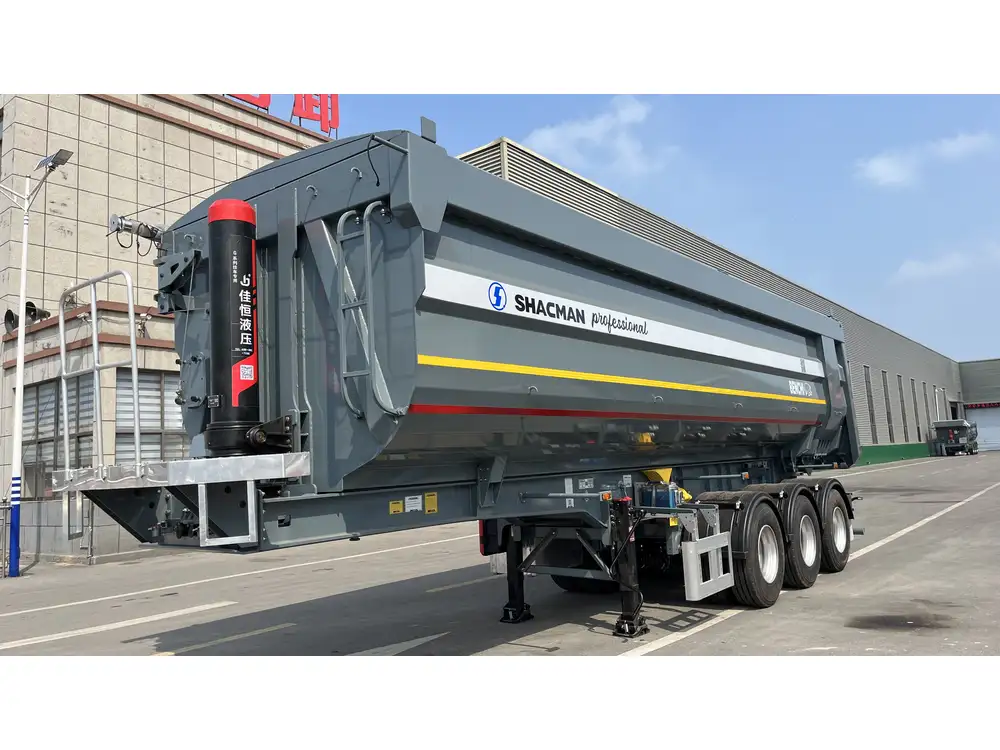In recent years, the automotive industry has seen a dramatic shift towards electric vehicles, spearheaded by innovative companies like Tesla. While Tesla is well-known for its passenger vehicles, many are curious about the feasibility of pulling heavier loads, specifically semi-trailers, with their electric trucks. In this article, we will delve into the intricacies of towing with a Tesla, focusing on load capacities, technical specifications, and real-world implications. This comprehensive analysis will not only clarify whether a Tesla can indeed pull a semi-trailer but will also provide insights for manufacturers, fleet owners, and enthusiasts alike.
Understanding Tesla’s Towing Capacity
Overview of Tesla Models and Their Specifications
Tesla’s offerings are diverse, including models like the Model S, Model 3, Model X, and the new Tesla Cybertruck. Each model has been engineered with differing capabilities when it comes to towing. Below is a brief comparison of the key specifications related to towing for each model.
| Model | Towing Capacity | Payload Capacity | Gross Vehicle Weight Rating (GVWR) |
|---|---|---|---|
| Model S | Up to 2,000 lbs | 850 lbs | 5,400 lbs |
| Model 3 | 0 lbs | 1,000 lbs | 4,000 lbs |
| Model X | Up to 5,000 lbs | 1,400 lbs | 6,000 lbs |
| Cybertruck | Up to 14,000 lbs* | 3,500 lbs* | 6,500 lbs* |
*Specifications are based on the latest available data and are subject to change.

Semi-Trailers and Their Weight Classes
To comprehend the towing capabilities of a Tesla effectively, it’s crucial to understand the weight classes of semi-trailers:
- Lightweight Trailers: Up to 20,000 lbs
- Standard Trailers: 20,000 to 34,000 lbs
- Heavy-Duty Trailers: 34,000 lbs and above
Given that most semi-trailers exceed the maximum towing capacity of Tesla’s electric range, it’s unlikely that models designed for personal use can manage such loads.
The Role of Powertrain Technology
Electric vs. Internal Combustion Engines
One of Tesla’s definitive advantages is its cutting-edge electric powertrain. Traditional internal combustion engine vehicles typically struggle with efficiency and torque under heavy loads. Teslas, on the other hand, utilize high-torque electric motors, offering substantial pulling power right from the start. This characteristic grants them a unique edge in various driving conditions.

Torque Output Comparison
| Powertrain Type | Average Torque (lb-ft) | Efficiency (%) |
|---|---|---|
| Tesla Electric Motors | 700-1,000+ | 90+ |
| Internal Combustion Engines | 250-400 | 20-25 |
Key Takeaway
While a Tesla may have the torque necessary to initiate pulling a semi-trailer, the continuous load capacity limitations still play a pivotal role in actual towing capabilities.
Real-World Application: Can it be Done?

Factor in Weight Distribution and Trailer Type
Several other factors affect Tesla’s towing ability, including weight distribution, trailer type, and trailer brakes. For example, a lightweight enclosed cargo trailer (close to the weight limits) may be manageable by a Tesla truck, especially the anticipated Cybertruck.
Limitations of Battery-Electric Vehicles (BEVs)
While a Tesla may be physically capable of towing a lighter semi-trailer temporarily, the efficiency is where issues arise. Pulling heavy loads can substantially drain a Tesla’s battery, leading to significantly reduced range.
Comparison of Range Under Load
| Model | Normal Range | Range While Towing (approx.) |
|---|---|---|
| Model X | 348 miles | 160-210 miles |
| Cybertruck | 500 miles* | 250-325 miles |
*Projected figures that might differ post-launch.

Safety Considerations
Stability and Control
Towing requires a finely tuned balance between stability and control. Electric vehicles have a low center of gravity, which can enhance stability; however, the physics of towing significantly changes dynamics.
Issues to Consider:
- Braking Distance: Heavier loads will increase braking distances.
- Acceleration: The performance curve is different with added weight.
Legal Regulations and Driver Limits
Laws regarding towing capacities vary drastically by jurisdiction, which can impact operations—especially for commercial fleets. Ensure compliance with the Department of Transportation (DOT) regulations, which impact utility in long-haul scenarios.

Alternatives to Tesla For Heavy Towing
Considering Other Electric Trucks
Although Tesla’s models are impressive in their own right, other manufacturers are entering the electric truck market with impressive specifications for towing:
- Rivian R1T: Offers a towing capacity of up to 11,000 lbs.
- Ford F-150 Lightning: Can tow over 10,000 lbs, providing good range and capacity for both personal and fleet use.
- GMC Hummer EV: This behemoth holds a staggering 7,500 lbs in towing capacity.
Hybrid Options
For users prioritizing heavy-load towing without compromising range, hybrid models could provide a practical solution. These vehicles combine the benefits of internal combustion engines with electric assists, optimizing performance.

Conclusion: Is a Tesla the Right Choice for Towing?
In conclusion, while a Tesla can technically pull a semi-trailer under certain conditions, practical limitations considerably restrict its efficacy for serious towing operations. With maximum towing capacities generally within the 5,000 lbs range for most Tesla models, attempting to tow a typical semi-trailer—which starts at 20,000 lbs—poses significant challenges.
Key Considerations for Fleet Managers and Owners:
- Evaluate the type of loads you are regularly towing.
- Consider investments in trucks specifically designed for heavy towing needs instead of repurposing personal electric vehicles.
- Stay informed about emerging technologies and products within the market that can support your operational goals.
In sum, electric vehicle capabilities are vast and continuously evolving. However, when it comes to towing heavy loads like semi-trailers, one must weigh the benefits and limitations carefully. As the industry progresses, both technological advancements and operating logistics will determine the viability of electric vehicles like Tesla for demanding transport duties. Understanding these dynamics will equip you to better navigate future fleet decisions effectively.



